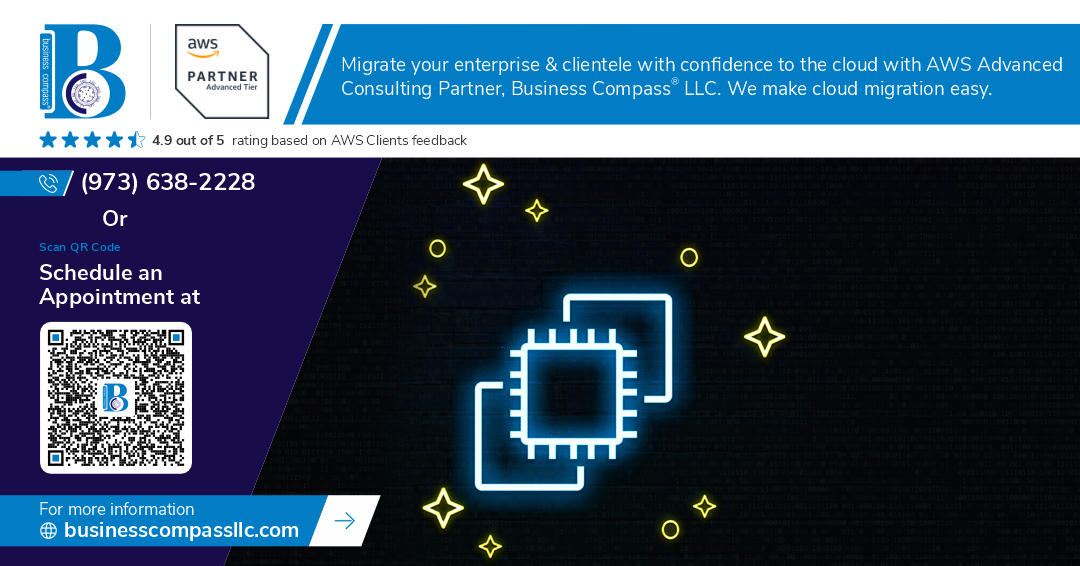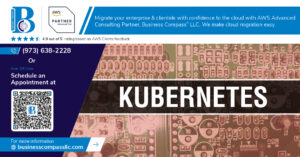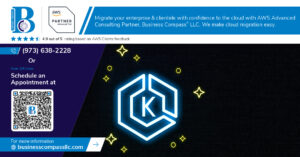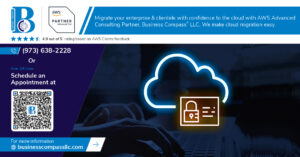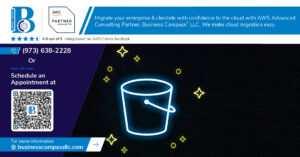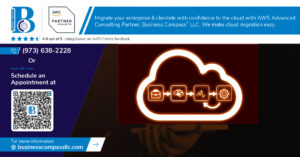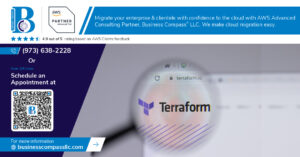Moving your datacenter operations to AWS doesn’t have to be overwhelming. This hands-on datacenter to AWS migration guide walks system administrators, cloud engineers, and IT professionals through a complete migration using EC2 and RDS in a practical cloud workbench lab environment.
You’ll get real experience with the entire migration process, from initial assessment to final optimization. We’ll cover the essential pre-migration planning that sets you up for success, including how to evaluate your current infrastructure and design an effective cloud migration strategy. You’ll also learn the step-by-step process for database migration with Amazon RDS and application server migration to EC2, complete with AWS migration best practices that prevent common pitfalls.
By the end of this AWS cloud migration tutorial, you’ll have migrated a complete application stack and know how to monitor and optimize your new cloud environment for peak performance.
Pre-Migration Assessment and Planning
Inventory Your Current Datacenter Infrastructure
Document every server, database, network component, and application running in your datacenter environment. Create a comprehensive spreadsheet listing hardware specifications, operating systems, software versions, and current resource utilization patterns. Use automated discovery tools like AWS Application Discovery Service or third-party solutions to capture accurate baseline metrics including CPU usage, memory consumption, storage requirements, and network traffic patterns over at least 30 days.
Identify Dependencies Between Applications and Databases
Map out all interconnections between your applications, databases, and supporting services to avoid breaking critical business processes during migration. Create dependency diagrams showing data flows, API calls, shared storage systems, and authentication mechanisms. Pay special attention to legacy applications that might have hard-coded IP addresses or non-standard communication protocols. Test these connections thoroughly since missing dependencies are the leading cause of failed datacenter to AWS migration projects.
Calculate Total Cost of Ownership for AWS Migration
Compare your current datacenter expenses against projected AWS costs using the AWS Pricing Calculator and Total Cost of Ownership tools. Factor in existing hardware depreciation, power consumption, cooling costs, maintenance contracts, and staffing expenses. For EC2 migration guide planning, consider Reserved Instances and Savings Plans to reduce long-term costs. Include migration-specific expenses like data transfer fees, temporary dual-environment costs, and professional services to get realistic budget projections for your cloud migration strategy.
Create Your Migration Timeline and Risk Mitigation Strategy
Develop a phased migration approach starting with non-critical systems to validate your AWS cloud migration tutorial methodology. Plan for database migrations using Amazon RDS migration tools during low-traffic windows to minimize business disruption. Build in buffer time for unexpected issues and create rollback procedures for each migration phase. Establish clear success criteria and testing protocols as part of your AWS migration best practices framework to ensure each system functions properly before proceeding to the next phase.
Setting Up Your AWS Cloud Environment
Configure VPC and Security Groups for Optimal Performance
Creating a robust Virtual Private Cloud (VPC) forms the foundation of your datacenter to AWS migration strategy. Design your VPC with multiple Availability Zones to ensure high availability and fault tolerance. Configure public subnets for web servers and private subnets for databases and application servers. Set up security groups as virtual firewalls, allowing only necessary traffic between components. Create separate security groups for web tiers, application tiers, and database tiers. Configure Network ACLs for additional subnet-level security. Implement VPC endpoints for AWS services to reduce data transfer costs and improve security by keeping traffic within the AWS network.
Select the Right EC2 Instance Types for Your Workloads
Choosing appropriate EC2 instance types directly impacts your migration success and cost optimization. Analyze your current datacenter workloads to understand CPU, memory, storage, and network requirements. For compute-intensive applications, consider C5 or C6i instances. Memory-optimized workloads benefit from R5 or R6i instances. General-purpose applications work well with M5 or M6i instances. Use AWS Compute Optimizer to receive rightsizing recommendations based on historical usage patterns. Consider graviton-based instances like M6g for cost savings up to 40%. Start with slightly larger instances during migration, then right-size based on actual CloudWatch metrics to avoid performance issues.
Choose Appropriate RDS Database Configurations
Amazon RDS configuration plays a critical role in your database migration success. Select the appropriate database engine that matches your current setup – MySQL, PostgreSQL, Oracle, or SQL Server. Choose Multi-AZ deployment for production databases to ensure automatic failover and high availability. Configure read replicas to distribute read traffic and improve performance. Size your RDS instances based on current database workloads, starting conservatively and scaling up as needed. Enable automated backups with appropriate retention periods. Set up parameter groups to match your existing database configurations. Consider Amazon Aurora for MySQL and PostgreSQL workloads to leverage cloud-native features and improved performance at lower costs.
Database Migration with Amazon RDS
Export and Prepare Your On-Premises Database for Transfer
Start your RDS database migration by creating a complete backup of your existing database. Use native tools like mysqldump for MySQL or pg_dump for PostgreSQL to export schema and data. Check data types, constraints, and stored procedures for AWS compatibility. Document connection strings, user permissions, and configuration settings. Clean up unnecessary data and optimize table structures before transfer. Store backup files in a secure, accessible location for the migration process.
Set Up RDS Instances with High Availability Features
Launch your Amazon RDS instance with Multi-AZ deployment for automatic failover protection. Choose appropriate instance types based on your datacenter to AWS migration requirements. Configure VPC security groups to control database access. Enable automated backups with point-in-time recovery. Set up parameter groups to match your original database configuration. Create read replicas if needed for load distribution. Configure monitoring and alerts through CloudWatch to track database performance metrics.
Execute Data Migration Using AWS Database Migration Service
Create a DMS replication instance in the same VPC as your RDS database. Set up source and target endpoints, testing connectivity to both systems. Configure migration tasks with appropriate settings for your data volume. Start with a full load migration, then enable ongoing replication for minimal downtime. Monitor migration progress through the DMS console. Handle any data transformation requirements using mapping rules. Schedule the cutover during low-traffic periods to minimize business impact.
Validate Data Integrity and Performance After Migration
Run comprehensive data validation queries comparing row counts, checksums, and key business metrics between source and target databases. Execute your application’s critical queries to verify performance meets expectations. Test all stored procedures, triggers, and functions work correctly in the Amazon RDS migration environment. Validate user access permissions and connection pooling. Run load tests to ensure the new setup handles peak traffic. Document any performance differences and optimization opportunities for your cloud migration strategy.
Application Server Migration to EC2
Create Custom AMIs from Your Existing Server Configurations
Building custom AMIs streamlines your EC2 migration guide by capturing your datacenter server configurations exactly as they run. Start by installing the AWS CLI on your source servers, then create snapshots of your application environments including installed software, configurations, and dependencies. Use AWS VM Import/Export to convert physical servers or virtual machines into AMIs, or deploy temporary EC2 instances to replicate your setup before creating the final image. Document each AMI with detailed tags describing the application version, OS configuration, and deployment requirements to maintain consistency across your cloud migration strategy.
Deploy and Configure EC2 Instances for Production Workloads
Launch production-ready instances using your custom AMIs, selecting appropriate instance types based on your datacenter to AWS migration performance requirements. Configure security groups to replicate your existing firewall rules while following AWS best practices for network isolation. Set up dedicated VPCs with proper subnet architecture, ensuring your EC2 application migration maintains the same network segmentation as your on-premises environment. Install CloudWatch agents for monitoring and configure automated backups using EBS snapshots. Apply consistent naming conventions and resource tags to track costs and manage resources effectively throughout your AWS cloud migration tutorial implementation.
Implement Auto Scaling and Load Balancing for Reliability
Deploy Application Load Balancers to distribute traffic across multiple availability zones, improving reliability beyond your original datacenter setup. Create Auto Scaling groups with policies that respond to CPU utilization, memory usage, and custom CloudWatch metrics specific to your applications. Configure health checks that monitor both EC2 instance health and application-specific endpoints to ensure automatic replacement of failed instances. Set minimum and maximum capacity limits based on historical traffic patterns from your datacenter environment. Use launch templates to standardize instance configurations and enable seamless scaling during peak usage periods.
Connect Applications to Your Migrated RDS Databases
Update application configuration files to point to your new RDS endpoints instead of on-premises database servers. Implement connection pooling to optimize database connections and handle the slight latency differences between datacenter and cloud environments. Configure security groups and database parameter groups to match your original database access patterns while leveraging RDS-specific optimizations. Test database connectivity from each EC2 instance and validate that connection strings, authentication methods, and SSL certificates work correctly. Update any hardcoded IP addresses or server names in your application code to use RDS DNS endpoints for seamless failover capabilities.
Test Application Functionality in the Cloud Environment
Run comprehensive functional tests comparing cloud performance against your datacenter baseline measurements. Execute load testing scenarios that simulate peak usage patterns to validate auto scaling configurations and database performance under stress. Test disaster recovery procedures by intentionally failing instances and databases to verify automated recovery processes work as expected. Validate all integrations with external services, APIs, and third-party systems to ensure network connectivity and security configurations function properly. Monitor application logs and performance metrics during testing phases, documenting any configuration adjustments needed for optimal cloud workbench lab performance before switching production traffic.
Post-Migration Optimization and Monitoring
Implement CloudWatch for Comprehensive Performance Monitoring
CloudWatch becomes your mission control center for tracking AWS migration performance across EC2 instances and RDS databases. Set up custom dashboards displaying CPU utilization, memory consumption, disk I/O, and network throughput. Create automated alarms for critical thresholds like high database connection counts or EC2 CPU spikes above 80%. Configure detailed monitoring for granular one-minute metrics instead of basic five-minute intervals. Log aggregation through CloudWatch Logs helps identify application bottlenecks and database query performance issues that weren’t visible in your datacenter environment.
Optimize Costs Through Right-Sizing and Reserved Instances
AWS migration success depends heavily on cost optimization strategies that reduce monthly bills by 30-50%. Use AWS Trusted Advisor and Cost Explorer to identify oversized EC2 instances running at low utilization. Downsize instances that consistently operate below 20% CPU usage. Purchase Reserved Instances for predictable workloads running 24/7, offering up to 75% savings compared to On-Demand pricing. Consider Savings Plans for flexible compute usage across EC2 and RDS. Implement automated scheduling to stop non-production instances during off-hours, dramatically reducing development and testing environment costs.
Establish Backup and Disaster Recovery Procedures
Robust backup strategies protect your migrated workloads from data loss and ensure business continuity. Enable automated RDS backups with point-in-time recovery, extending retention periods to 35 days for critical databases. Create EC2 instance snapshots using AWS Backup service, scheduling daily incremental backups stored across multiple Availability Zones. Document recovery procedures with specific RTO and RPO targets. Test disaster recovery scenarios monthly by launching instances from snapshots in different regions. Configure cross-region replication for mission-critical data, ensuring your cloud migration maintains higher availability than your original datacenter setup.
Moving your datacenter workloads to AWS doesn’t have to be overwhelming when you break it down into manageable steps. The key is thorough planning upfront, setting up your cloud environment properly, and taking a systematic approach to migrating your databases and applications. By following the assessment, setup, RDS migration, EC2 deployment, and optimization phases, you can avoid common pitfalls and ensure your migration goes smoothly.
The real value comes after the migration is complete. Once your applications are running on EC2 and your data is safely housed in RDS, you’ll have access to AWS’s powerful monitoring and optimization tools that simply weren’t available in your traditional datacenter setup. Take time to fine-tune your instances, set up proper monitoring, and explore the cost-saving opportunities that cloud infrastructure provides. Your migration is just the beginning of a more flexible, scalable, and efficient IT environment.










